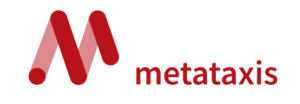By Alexander Church |
April 28, 2023
The information architecture conundrum
In his latest blog, Alex Church, Senior Consultant at Metataxis, discusses the balancing act involved in developing an effective information architecture that appeals to all stakeholders within an organisation.
The optimal benefits of an information architecture
When developing an information architecture for our clients, we try to live by our definition of ‘a way of organising all your information for most benefit’.
However, this raises the question of ‘most benefit’ for whom and for what purpose?
This is where the balancing act comes in, as we may have to, for example, consider two of the objectives that the information architecture will support: Findability and compliance.
- Findability – structure and navigation; filtering and grouping; search, etc
- Compliance – retention; information protection; access control, etc

Information architecture from a compliance perspective
In this case, taking a compliance perspective puts a very different spin on how you organise your information in contrast to how a user regards their information.
Organising information in a way that makes your records manager’s life easier isn’t always going to do the same for those who work with the information on a day-to-day basis.
Getting the balance right
From our experience, you’ll soon be getting complaints from users if compliance is the driving force behind your information architecture.
However, compliance is clearly important, so we do need to factor it in, but in a way that does not impinge on people’s ability to work in an effective and efficient manner. There is likely to be some compromise on both sides, so engagement with stakeholders across the organisation is key both in understanding user requirements and getting acceptance of the end result.
Finding the right balance between these competing needs is where the art of information architecture comes in.
In SharePoint and Microsoft 365 we would, for example, look at what level we create the sites, how we use libraries, content types, columns as well as metadata in order to efficiently organise and categorise information.
With regards to records management, we would need to consider how we create retention labels and policies in Purview and how we can align their implementation to the information architecture. Questions to consider could include: “can we apply default retention labels to libraries?” and “how can we use metadata to trigger retention?” and if we need to flex it to accommodate our compliance requirements.
Identifying the priorities
As seasoned information architects here at Metataxis, we use our experience in engaging with stakeholders, weighing up the competing priorities, and using the different information architecture elements at our disposal to satisfy both requirements.

